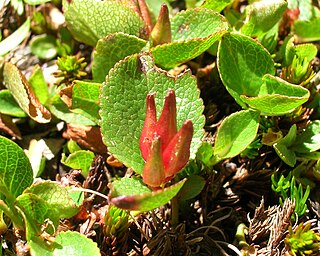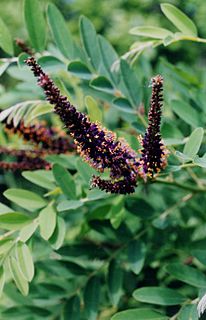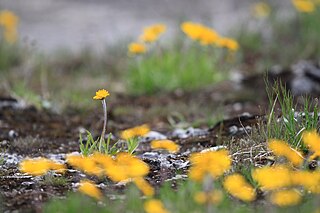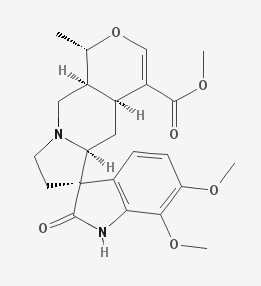
Erythrina herbacea, commonly known as the coral bean, Cherokee bean, Mamou plant in South Louisiana, red cardinal or cardinal spear, is a flowering shrub or small tree found throughout the southeastern United States and northeastern Mexico; it has also been reported from parts of Central America and, as an introduced species, from Pakistan. Various other systematic names have been used for this plant in the past, including Erythrina arborea, Erythrina hederifolia, Erythrina humilis, Erythrina rubicunda, Corallodendron herbaceum and Xyphanthus hederifolius.

Salix herbacea, the dwarf willow, least willow or snowbed willow, is a species of tiny creeping willow adapted to survive in harsh arctic and subarctic environments. Distributed widely in alpine and arctic environments around the North Atlantic Ocean, it is one of the smallest of woody plants.

Amorpha is a genus of plants in the pea family, Fabaceae. All the species are native to North America, from southern Canada, most of the United States (US), and northern Mexico. They are commonly known as false indigo. The name Amorpha means "deformed" or "without form" in Greek and was given because flowers of this genus only have one petal, unlike the usual "pea-shaped" flowers of the Faboideae subfamily. Amorpha is missing the wing and keel petals.

Vinca herbacea, with common name herbaceous periwinkle, is a flowering plant native to eastern and southeastern Europe, from Austria south to Greece, and east to the Crimea, and also in northern Western Asia, in the Caucasus and Alborz mountains.

Smilax herbacea, the smooth carrionflower or smooth herbaceous greenbrier, is a plant in the catbriar family. It is native to eastern Canada and the eastern United States. Its preferred natural habitat is rich forests, and riparian thicket and meadows.
The Alpine Botanical Garden “Saussurea” is an alpine botanical garden located at Pavillon du Mont Fréty, first station for the Skyway Monte Bianco cable car, in Courmayeur, Aosta Valley, Italy. It describes itself as Europe's highest botanical garden, at 2173 metres above sea level, and is open daily in the warmer months.
This article describes Flora of Turkey that belong to the Apocynaceae family of flowering plants.

Ageratina herbacea is a North American species of flowering plants in the daisy family known by the common names fragrant snakeroot and Apache snakeroot. It is native to desert regions of the southwestern United States and northern Mexico. It grows in rocky slopes in conifer forests and woodlands.

Sesbania herbacea is a species of flowering plant in the legume family known by the common names bigpod sesbania, Colorado River-hemp, and coffeeweed. It is native to the United States, particularly the southeastern states, where it grows in moist environments. It can be found elsewhere as an introduced species. It is a woody herb growing to 3 meters or more in height. The leaves are made up of many pairs of oblong leaflets. The inflorescence is a small raceme of pealike flowers with yellow or purple-spotted petals.

Tetraneuris herbacea is a rare species of flowering plant in the aster family known by the common names eastern fournerved daisy, lakeside daisy, fournerved starflower, and Manitoulin gold. It is native to and endemic to the Great Lakes region in North America, where it is present in Ontario, Ohio, Michigan, and Illinois. It is threatened by habitat destruction and degradation by several forces, including limestone quarrying, recreational activity, fire suppression, and construction. It is a federally listed threatened species of the United States and of Canada.
Neorhizobium huautlense is a Gram negative root nodule bacteria. It forms nitrogen-fixing root nodules on Sesbania herbacea.

Majdine is a bio-active isolate of Vinca minor and Vinca herbacea.

Sybra is a genus of beetles in the family Cerambycidae, containing the following species:

Sybra umbratica is a species of beetle in the family Cerambycidae. It was described by Pascoe in 1865.
Sybra bioculata is a species of beetle in the family Cerambycidae. It was described by Pic in 1925. It contains four subspecies: Sybra bioculata bioculata, Sybra bioculata quadrinotata, Sybra bioculata sikkimana, and Sybra bioculata tigrina.
Sybra mimogeminata is a species of beetle in the family Cerambycidae. It was described by Breuning and Ohbayashi in 1964. It contains two subspecies, Sybra mimogeminata carinatipennis and Sybra mimogeminata mimogeminata.

Sybra ordinata is a species of beetle in the family Cerambycidae. It was described by Bates in 1873.
Sybra pascoei is a species of beetle in the family Cerambycidae. It was described by Lameere in 1893.
Banasa herbacea is a species of stink bug in the family Pentatomidae. It is found in the Caribbean, Central America, and North America.












